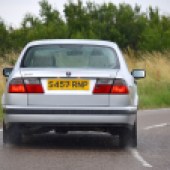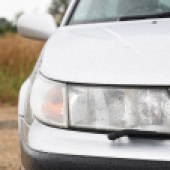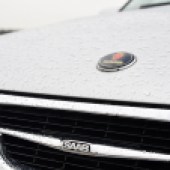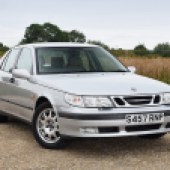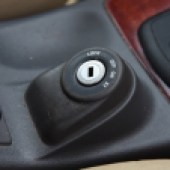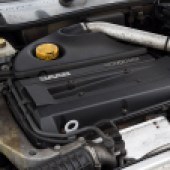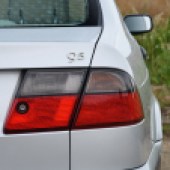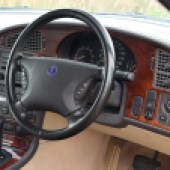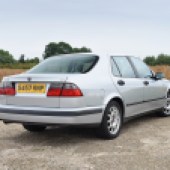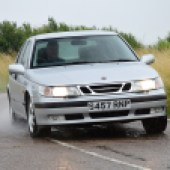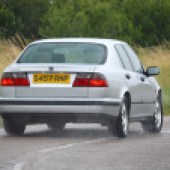More than a decade has passed since the brand disappeared, but the Saab 9-5 remains a great ownership prospect. Here’s how to buy a good one
Images: Paul Walton
Saabs have always represented an interesting alternative to models from both mainstream and premium brands, and it was true of the 9-5. Effectively a replacement for the long-lived 9000, the new saloon and estate boasted all of the attributes that had made the Swedish marque so popular. Comfort and safety were very much at the top of the agenda, and combined with classy styling, a sound driving experience and ample performance it’s no wonder the 9-5 proved so popular.
Launched in 1997 and remaining in production until 2010, almost half a million were sold and there’s no shortage of loyal enthusiasts today. Numerous updates during production kept things fresh, and while not everyone was sold on the chrome-trimmed restyle that resulted in the ‘Dame Edna’ nickname it did little to dent the model’s appeal.
And with an impressive choice of turbocharged petrol and diesel engines – and proper pace in the form of the 256bhp ‘Aero’ version – there was plenty to keep buyers interested. The final saloon left the Trollhättan factory in 2009 with estate production ending early the following year, and while the 9-5 badge would live on with a new model it wasn’t to last long and would mark the end of Saab.
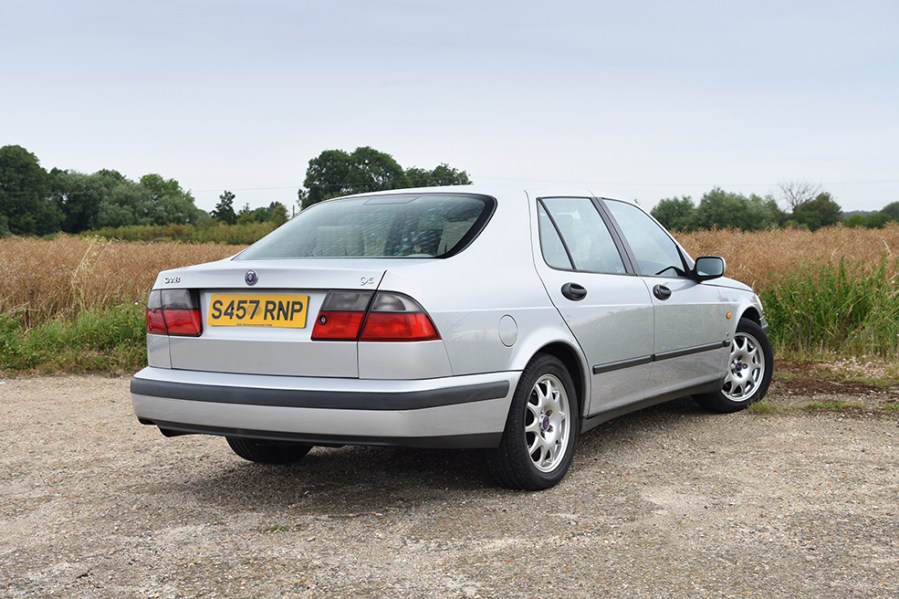
Bodywork
Saab’s reputation for quality and solid construction was well-founded, and corrosion isn’t much of a problem. There are a few spots worth checking, though, including the fuel filler flap, the bottom of the tailgate on estates and what’s referred to as the ‘dogleg’ where the rear of the sill meets the lower section of the rear wheelarch. A brief examination of the underneath is wise, too, especially on the very earliest cars, but these areas aside there’s really not much to worry about.
That means you can just spend time assessing the overall condition of the panels and exterior trim, looking for the usual scuffs, scrapes and excessive stone-chipping. There are plenty of second-hand bits out there, but with a decent number of cars to be found in the classifieds there’s little need to land yourself with an abused example. One other thing worth checking is the operation of the headlamps, especially if the car has xenon units; a genuine Saab bulb is getting on for £150.
Engine and transmission
Specialists say the engines are capable of covering 200k miles with ease, but the key to such longevity is proper maintenance.That starts with regular oil and filter changes (every 5000 to 6000 miles is a good idea) using a top quality, fully synthetic brew. Saab recommended the latter anyway, particularly after 2004 when they modified the Positive Crankcase Ventilation (PCV) system to sort a problem with oil sludging. It applied to the B235 engines and prevented proper lubrication, resulting in terminal engine failure, but a kit was available to retro-fit the new set-up to earlier units. If you’ve any concerns about an older car it’s worth removing the sump and checking the state of the oil pick up.
A regular diet of fresh oil will also prevent wear of the timing chains fitted to most engines, although both the V6 petrol and 1.9 diesel units use a timing belt; these need replacing at 60k and 48k miles respectively so check for evidence of this in the service history.
All 9-5 engines use a turbocharger, so ensure that everything’s healthy in this department; noticeable exhaust smoke or lack of performance should ring alarm bells, and with replacement likely to involve a four-figure sum it’s a problem you’ll want to avoid.
Also worth watching for are signs of issues with the engine ECU and sensors, so warning lights or poor running will need further investigation before you commit to a purchase. Knocks under acceleration could be failed engine mounts, although replacement isn’t difficult. Another common problem is failure of the Direct Ignition Cassette (DIC) that acts as the coil pack; some owners resort to carrying a spare just in case, and you’re looking at around £250 for a genuine part (we’d avoid the temptation of cheap replacements).
The five-speed manual gearboxes aren’t inherently problematic, but it’s sensible to check high-mileage cars for signs of worn bearings, weak synchromesh and difficulty selecting gears. The most powerful variants give the gearbox a hard time, so pay these extra attention. And ensure the clutch feels healthy with no sign of hydraulic issues; the slave cylinder is a concentric type within the gearbox housing and replacement involves plenty of labour.
As for the automatic transmission, the Aisin units last well unless abused and refreshing the fluid every 75k miles or so should keep things healthy. Watch for leaks from the oil cooler pipes, though. The 5-speed unit that was introduced for the 2002 model year added some extra sophistication and improved efficiency, too, so if you prefer just the two pedals this is the one to go for.
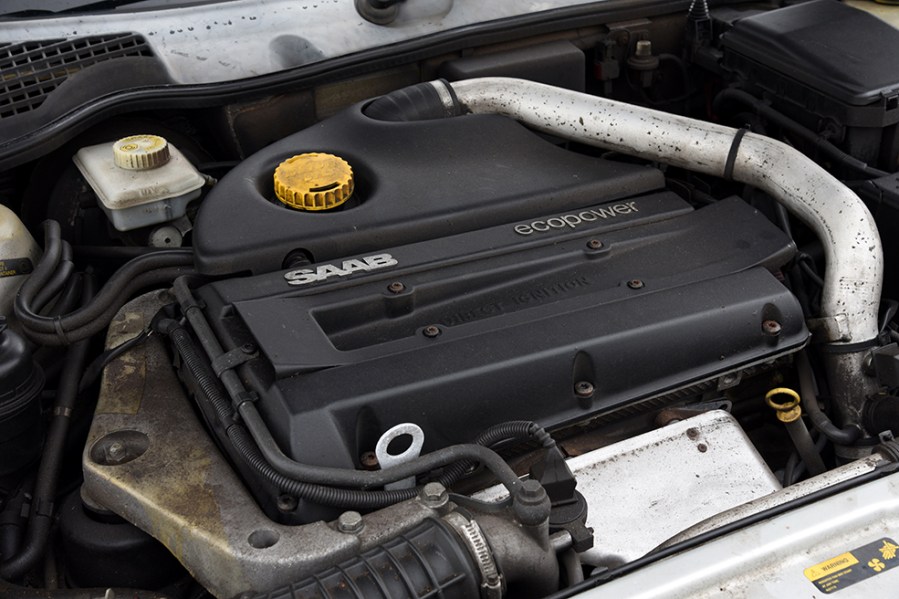
Suspension, steering and brakes
There was nothing unconventional about the suspension with the 9-5 employing MacPherson struts up front and a multi-link arrangement at the rear. It provided a pleasing balance of ride and handling, and unless it’s been completely neglected there shouldn’t be a great deal to worry about. The main checks should focus on issues such as worn dampers, worn and noisy front strut top mounts and worn anti-roll bar bushes and drop links.
Parts are readily available from Saab specialists and on-line suppliers, and costs are reasonable so an overhaul won’t break the bank. It’s all straightforward enough for the DIY-er, too, and if you fancy upgrades in the form of stiffer dampers or polyurethane bushes you can source those quite easily.
It’s much the same story with the brakes that are more than up to the task, and it’s just a case of checking for wear and tear. Ensure that the ABS warning light illuminates and extinguishes correctly on start-up, though. The system isn’t known for major problems, but ABS rings can corrode and split which will throw up a warning; replacement is straightforward.
Steering-wise, well, there’s not much to worry about there, either, so just check for fluid leaks from the pipes as they can be a pain to replace. Lastly, plenty of power going through the front wheels accelerated tyre wear so haggle accordingly if replacement is on the cards. And alloy rims could be ready for a refurb, but specialists can sort this at a reasonable cost.
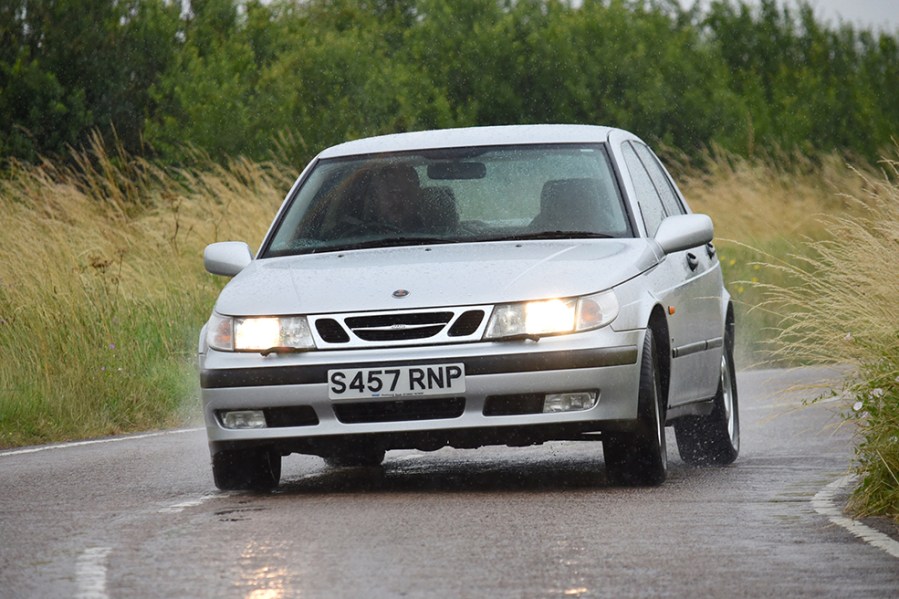
Interior, trim and electrics
The cabin of a 9-5 is a thoroughly pleasant place to be, with ample space and comfort on offer. It wears high mileages well, too, so just be on the lookout for seat trim and carpets that are suffering from previous abuse. Some models got leather trim which adds plushness, and assuming there’s nothing worse than light creasing and scuffs there are plenty of products that can rejuvenate it. Check the state of the load bay in estates, though, as some got used as workhorses.
All models were well-equipped, so you’ll want to spend a bit of time ensuring everything works. Window mechanisms can fail and central locking can go on the blink, and check that the ‘Night Panel’ function which dimmed the dashboard lighting still works properly.
Also, the LCD panel for the Saab Information Display (SID) can lose pixels, but specialists should be able to sort this at a reasonable cost. And if radio reception is poor it could be because the heating elements for the rear window are damaged – it used them as the aerial (you can’t just buy a second-hand audio unit, either, as diagnostic equipment is required to swap it into another car).
But perhaps the most important check is for correct operation of the climate control system, not least because removing the system to sort problems is very labour-intensive. The arms that control the various flaps can break, so if you get airflow one side but not the other this is probably why. You can check for faults by pressing the AUTO and OFF buttons at the same time; zeroes displayed mean all should be well, but single- or double-digit codes will need a more bit caution.
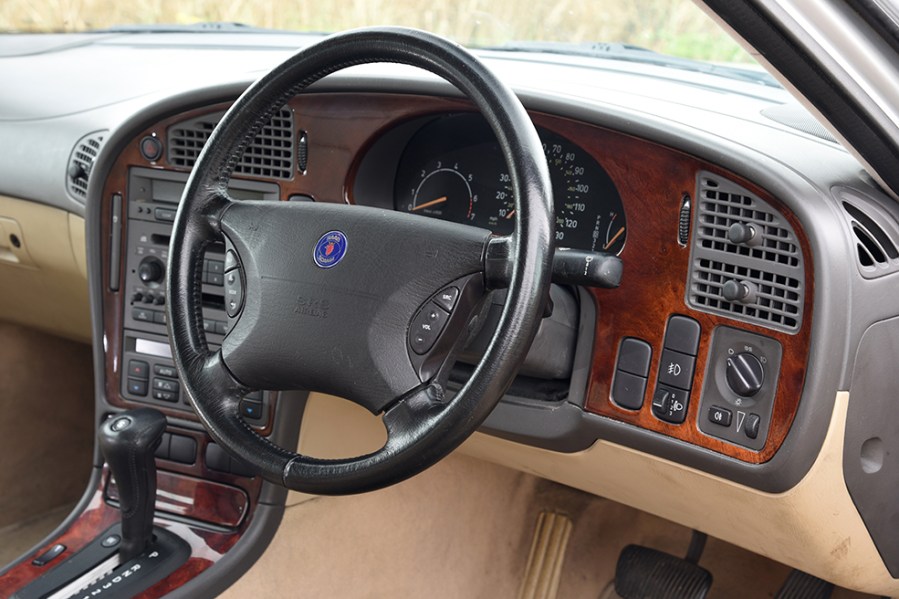
Saab 9-5: our verdict
There’s no doubt that the 9-5 represents a lot of car for the cash, and if you’re after a saloon or estate that majors on comfort and mile-munching ability then it thoroughly deserves consideration. That these cars are safe, perform well and boast all of the modern convenience features you’d expect is the icing on the cake.
The same pretty much applies to rival models from the German ‘big three’ but there’s something temptingly – and refreshingly – different about a Saab. And for some buyers that might just be all the reason they need to look to Sweden instead. That overall reliability is sound is a further plus, and if you buy a good example to begin with there are enough specialists out there – along with good club support – to ensure that ownership is hassle-free. It’s a modern classic that’s very easy to recommend.
There’s a reasonable number of Saab 9-5 examples for sale at any one time, and joining the owner’s club is a another good way to source one. Saloons outnumber estates in the classifieds but values are essentially the same, and there’s an even split between petrol and diesel models.
Go shopping with a budget of £1500–2000 and it’s pretty much where things start for a tidy example with anything up to 150k miles on the clock. If you can stretch to £2500–3000 you’ll find nice cars with few owners and a good history, but while you’ll find a few advertised for the £5000 mark the reality is that £3500–4000 is pretty much top money.
At this point you’re into the short-lived second generation. Ultimately, it’s not a lot of money for a car that should prove very satisfying to own.

Saab 9-5 timeline
1997
Production of the saloon begins at Trollhättan, with cars arriving in the UK in August. All versions feature turbocharged engines and there are standard and SE trim levels.
1998
A 3.0-litre V6 petrol engine is added to the range, along with a flagship Griffin model. The practical estate version arrives later the same year.
2000
Performance fans can enjoy the 9-5 Aero which is offered with a 230bhp 2.3-litre engine (power output would be boosted later on). It gets a body kit, bigger brakes, lowered suspension and more.
2002
An update introduces revisions inside and out, and the main trim levels are now Linear, Arc and Vector. A 5-speed automatic gearbox replaces the 4-speeder, and a GM-sourced 2.2-litre turbo-diesel engine joins the range.
2006
Another update sees major changes to front and rear-end styling, and introduces the ‘Dame Edna’ look. The previous 2.2- and 3.0-litre diesel engines are replaced by a 150bhp 1.9 TiD unit.
2009
Last saloon is made in July
2010
Final estate in February 2010. Total production of saloon and estate variants amounts to 252,236 and 231,357 examples respectively.


